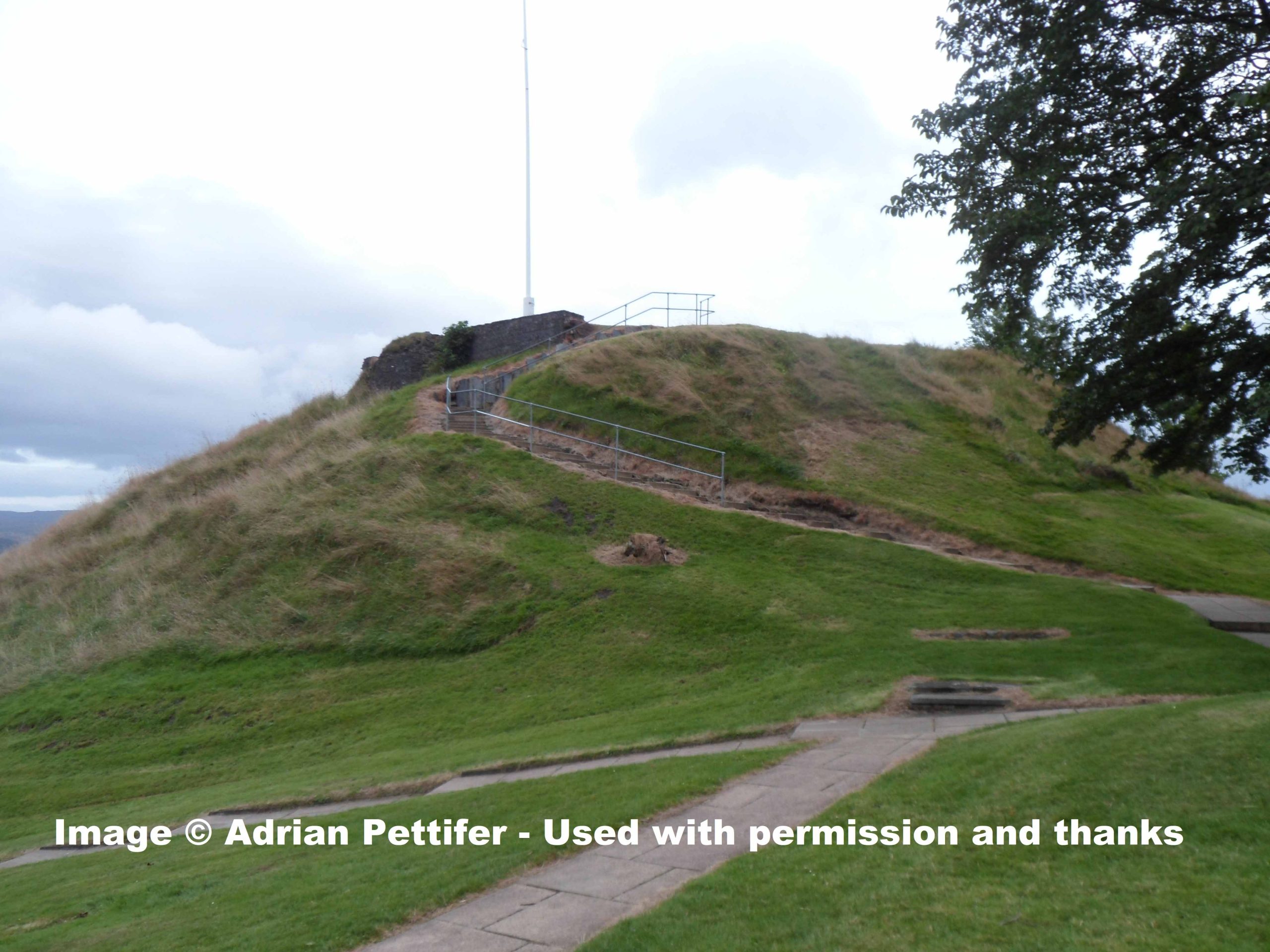Dunoon Castle

Dunoon Castle Details
Dunoon Castle, a badly ruined C14 royal castle on hilltop site later granted to the Campbells and ruined by C17.
- Closest To: Dunoon
- Access: Free Public Access
- Grid Reference: NS175764
Dunoon Castle is a sad shadow of its former self, and now stands within a park that is open to the public at all times. The castle mound has been substantially landscaped from the conical feature that appears in early photographs and the ruin has also been largely removed.
The hill overlooks the Firth of Clyde, and may well have been fortified as a dun before the Cowal peninsular was granted as a speculative grant of land to the Stewarts at the cost of Somerled and his descendants – certainly there seems little chance of it being a royal foundation. There was a castle with a constable here in the reign of Alexander II which was probably a simple courtyard, maybe later enhanced with the addition of towers. Although the rectangular wall fragments on the first Ordnance Survey suggest otherwise, these have not been conclusively dated and may relate to a later phase of building – the Pont map of c1590 shows a large and impressive tower house alongside “Dunuyn Cast” which is certainly consistent with an early 16th century great tower. Whether this was actually on the top of the hill of course, is debatable.
In 1334 Colin Campbell of Lochawe was made heritable keeper of Dunoon Castle after capturing it from forces loyal to Edward Balliol. We may assume from the fact that his descendant Archibald Campbell, earl of Argyll, held the same position that the chiefs of the Campbells had a largely unshakeable hold on the position – together with the lands that came with the grant to sustain the keeper and his expenses. The Argylls did not really do much with Dunoon once they had it, however, and it was eventually abandoned to fall into ruin by the mid 17th century, and seriously damaged during the rebellion in 1685 of Argyll. After this it was just left to fall into ruin.
Official Dunoon Castle Museum website
Become a supporter of my work to access a more detailed history